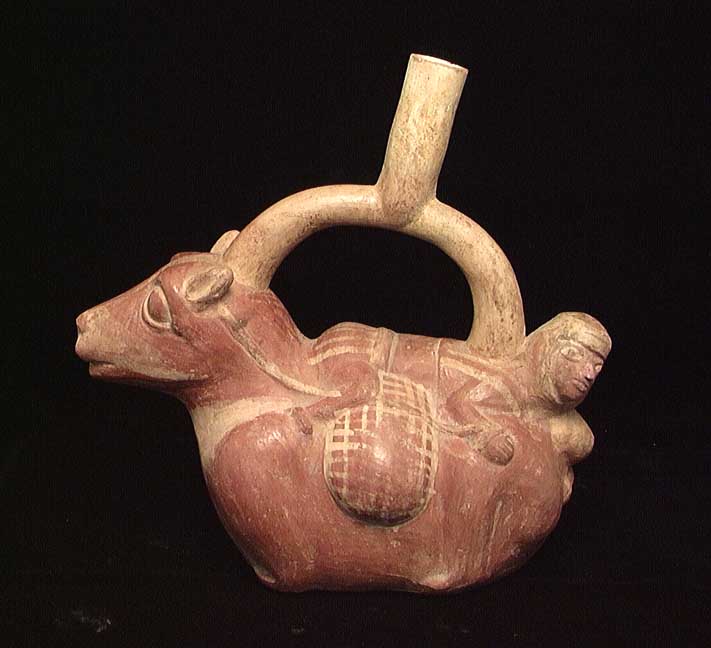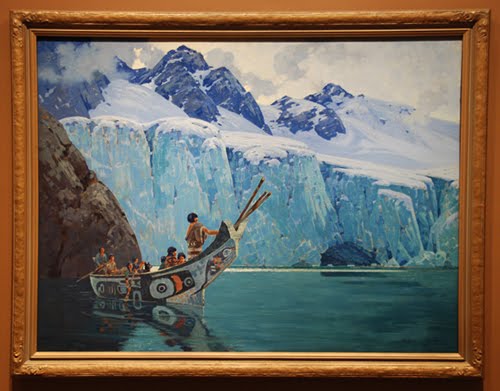The Rise of the Southern Empires
Around 100 BC, the cities of the Martial Coast had created their own form of writing, adopted from concepts from the Awapi’s own innovations and from the bark-paper and horse hide books they introduced from Middle Columbia.
The writing of the Martial Coast of South Columbia went from top to bottom and was read on a line, imitating the code-knots of the Awapi. In order to show the connection of glyphs to each-other, the South Columbians drew a line between the letters, leaving gaps between words. Symbols by themselves represented a word, while connected symbols represented a sound. In a move borrowed from Middle Columbia, numbers were represented by horizontal lines and dots, although the South Columbians used a base 10 rather than the base 20 that was more common in Middle Columbia.
The most important feature that came out of South Columbian writing was abstraction. The idea of reducing entire words and sounds to very simple dots on a line that the Awapi struck upon stuck with the South Columbians who copied them. They would create simple, easy to write symbols to represent their language. While complexity in fields like politics, religion, and architecture are often retrospectively seen as a sign of accomplishment on a society’s part, simplicity also has its uses. The simpler forms of writing would make learning writing easier, and therefore storing and managing information more common. Instead of just war leaders collecting taxes and writing about their own accomplishments, clergy could record and transmit information, including observations on the weather and nature-vital information, on the capricious and potentially lethal Martial Coast. Merchants could organize bigger ventures and keep track of larger networks, generating more wealth. Knowledge is power, and writing was a great boon to knowledge in South Columbia.
With writing, the heirs of the original cities of Caral gained the ability to organize themselves on a new level, like the Gaayu’be’ena’a. And from this northern empire, they acquired the tree saddle. These were potent empire-building tools, and perhaps it was inevitable that they would be put to use in that way.
Around 100 AD, the process of conquest began when a young king named Nyamlap ordered the construction of a large vessel. Nyamlap was, according to the histories written by his scribes, highly pious and wished to create a ‘floating temple’ on which to give the god he was named for sacrificial offerings. However, on the maiden voyage his ship was attacked by Awapi pirates, and destroyed. Nyamlap floated back to shore, miraculously saved by providence, and vowed revenge on the insolent pirates.
He launched a military campaign against the strongholds of these ‘pirates’-a noble deed in the texts of his empire, but if one reads between the lines one sees a pogrom against the fiercely independent Awapi, an attempt to cleanse ‘aliens’ out of his control.
Pottery from Nyamlap's grave, depicting a prisoner of war slung over a horse.
Nyamlap’s campaign brought him into the Awapi homelands, where he scattered all resistance before him and completed the decentralization of the Awapi culture. While some fishing villages would remain scattered around the Martial Coast, and the Arponaz Islands would remain an Awapi cultural bastion, Nyamlap’s violent conquest and subsequent administration would coerce the equatorial mainland Awapi into integrating into his larger kingdom. Many abandoned the fishing and mercantilism that had sustained their earliest ancestors, and moved inland to farm. Their relatives on the sea, meanwhile, had lost their homeland.
After the conquest of the Awapi, Nyamlap turned against his southern neighbors, who had watched his campaign with a horror and now sought to take him down. Nyamlap faced down his foes with a cool certainty and a creative approach to strategy. By this point, domestic horses had been present in South Columbia for centuries, and counter-cavalry measures had started to be developed. It was Nyamlap who is credited with first drilling his troops to stand against cavalry charges, leading mock attacks against conscripts himself and punishing those who panicked and fled harshly but rewarding those who stood their ground while being charged.
These soldiers were extremely effective in the battlefield, organizing themselves into lines armed with different weapons. When charged, the first 2 lines used bows, dart throwers, and even slings to destroy the line of cavalry charging at them. Once the enemy riders closed the gap, the third line would step forward and use thrusting spears to attack the horses and riders. It was dangerous business, but Nyamlap’s innovative training created new tactics for foot soldiers. He produced a new kind of army-one that fought as a unit, rather than having individual soldiers rush at each-other en masse and fight pitched battles warrior to warrior. It was also extremely effective-one by one, the rival cities on the Martial coast fell to Nyamlap and his successors. The Chiclayec Empire had been born.
Just as in middle Columbia, the use of horses and writing to create an administrative network allowed for an early rise of the empire of conquest. Although the area directly controlled by Nyamlap was a relatively thin stretch of coast, it stretched from the equator to the Atacamac desert, and controlled almost all the Martial Ocean trade between Middle and South Columbia.
While the Chiclayec Empire formed on the coast, kingdoms were forming in the Kechay mountains. Although the mountain people were far behind their lowland neighbors in settling into sedentary village, by the last centuries B.C. they had put together an agricultural package well adapted for their alpine homeland and were building cities.
Although horses featured prominently in the artwork of these early cities, often portraying deities or revered ancestors on their backs, they were a small part of life in the Kechay Mountains even after cold-resistant breeds became established. Llamas and alpacas provided wool and meat, as well as labor since they were much more suited to scrambling up steep mountainsides. Horses were kept as status symbols by elites, who in riding them demonstrated their strength and connection to the deities that granted them the right to rule.
More important to these kingdoms was the managing great coastal empire, which was their main trading partner and greatest military threat. While the coastal people had little interest in controlling the mountains beyond getting metal ores and wool, they ensured that any attempts to not cooperate in trade were met with violence and unstoppable force. Political overtures to appease their powerful nature and keep their neighbors from using it against them were absolutely vital, and so coastal merchants moved into the mountain strongholds despite the strong cultural taboos against market trading, while young nobility from the mountains apprenticed in the cities of the coastal plain, bringing otherwise isolated kingdoms into the great Columbian networks of trade and ideas.
This effect could be seen further south on the great central plateau and nearby coastline of the Kechay Mountains. Although the people from there lived on the edge of the driest land in the world, they had developed a sophisticated irrigation system. When the armies of the Chiclayep Empire marched in, they found several chiefdoms that expressed devotion to the gods through elaborate earthwork monuments and pilgrimages to sacred sites. Nyamlap III co-opted these practices, erecting shrines to his great-grandfather in the pilgrimage sites and sacrificing horses on the earth works to consecrate them to his own gods. Once the territory was under control, it began to change. The Chiclayep bureaucrats imported mountain horses to gift to the people of the plateau, who found that on their flat land horses were extremely useful as labor animals. Chiefs in the area, even those not under the direct control of Chiclayep, began to adopt writing in addition to monuments to record their deeds. This southern frontier would create a creole culture that eventually would lead to the creation of the Pachayep kingdom-known later in history as the Gunpowder Kingdom to Europeans.
Earthwork art of the proto-Pachayep peoples.




